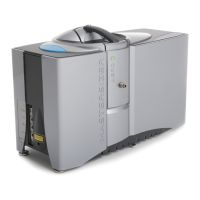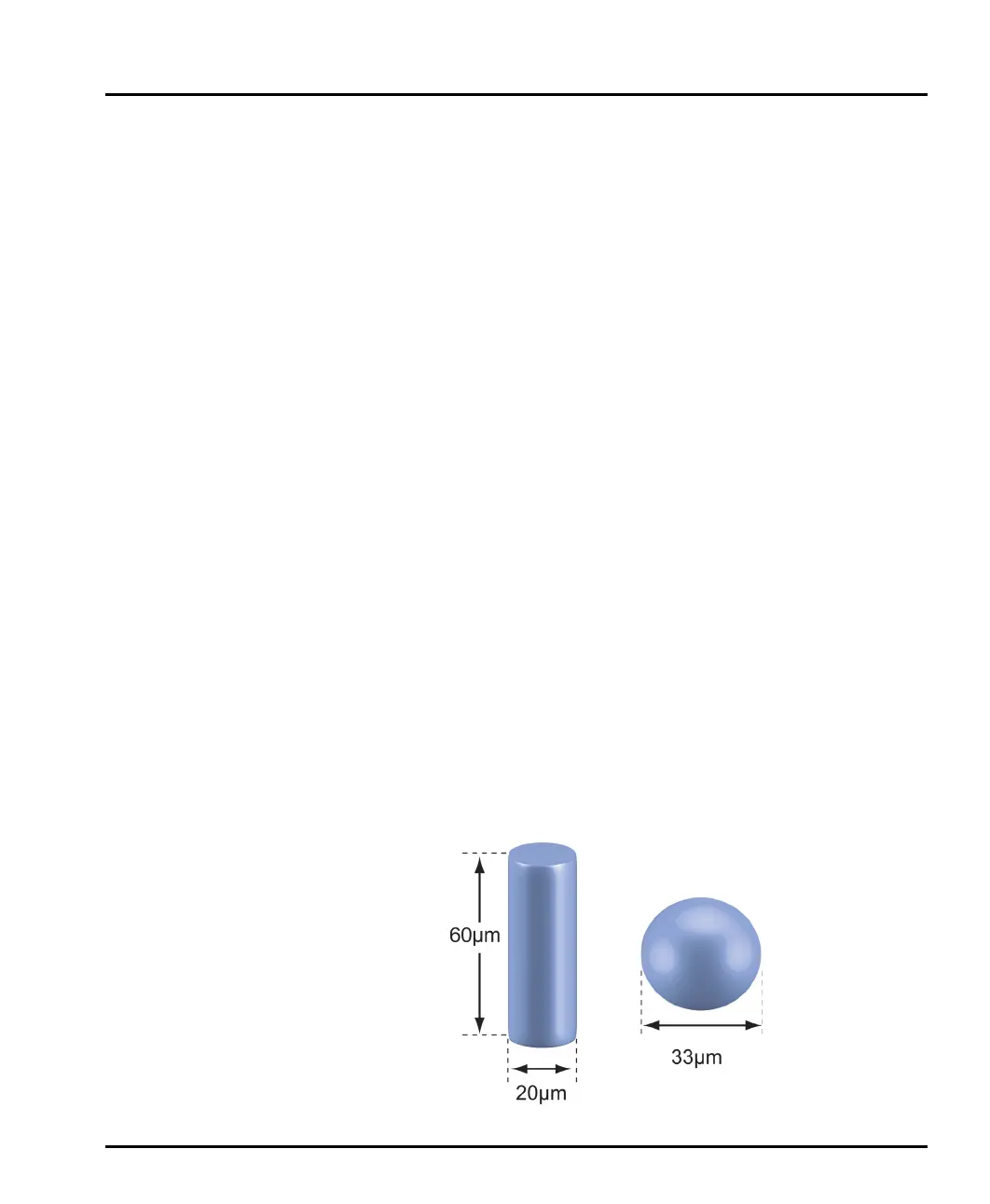Chapter 5 Viewing measurement results
Page 5-18 MAN 0474
50 microns, this describes it exactly. We cannot do the same even for a cube as 50
microns can refer to its edge or to a diagonal.
One way to get a single unique number to describe an irregular shaped particle is to
compare some feature of the actual particle to an imaginary spherical particle.
Some typical methods of doing this are:
Equivalent surface area – calculating the diameter of a theoretical sphere
that has the same surface area of the original particle.
Equivalent maximum length – this is where the diameter of a theoretical
sphere is the same as the maximum dimension of the original particle.
Equivalent minimum length – this is where the diameter of a theoretical
sphere is the same as the minimum dimension of the original particle.
There are many other methods available to do this. This technique is known as
“equivalent spheres”.
The Mastersizer uses the volume of the particle to measure its size. In the example
above, the matchbox has a volume of 50 x 25 x 10mm = 12500mm
3
. If the Master-
sizer was able to measure this size of “particle” it would take this volume and calcu-
late the diameter of an imaginary sphere that is equivalent in volume - in this case it
will be a sphere of about 30mm diameter.
Obviously the answer will be different if the surface area or maximum dimension
of the matchbox is used to calculate an equivalent sphere. All of these answers are
correct but each is measuring a different aspect of the matchbox. We can therefore
only seriously compare measurements that have been measured using the same
technique.
Consider a cylindrical particle of diameter 20 microns and length 60 microns. The
volume of the cylinder is:
ill 7973

